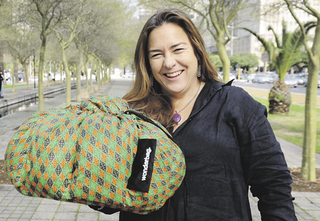12 April 2016
The internet ate my homework*
- Eat more bread: Bloomberg News explains why agricultural prices have fallen for three years in a row: “We all bought into this thesis of having to feed nine billion mouths by 2050 … Unfortunately, at the moment global grain demand is not keeping up with the rise in production.”
- Eat more kale: Why are some food prices seem never to come down: “as some become more aware of global inequality and … exploitation … they are … voting with their pocketbooks for alternatives they believe are more benign and deliver greater value to themselves, their families, and their communities.”
- Eat more ice cream: is there anything left to say about gelato in Rome? “Her gelato base contains only milk, cream, sugar and flavors that come from whole ingredients such as saffron, hibiscus flower and lapsang souchong tea, to name a few.”
- Eat more cultures: There’s a hooha brewing about food appropriation that I’m steering well clear of, but Rachel Laudan shares her experience: “I tell this story … so that I can use it to talk about how complicated the transfer of culinary knowledge actually is”.
- Drink more coffee: I love my Aeropress, but I am such a nOOb: “Head [sic] water to 79 celsius; Add 60 grams of water; Turbulent wiggle for 15 seconds.”
* Honest; it was down here most of yesterday.




 When it comes to cradles of agriculture, West Africa does not often get a look in. The Sahel is better known as a place of famine than of feasting, but it wasn’t always so, and even today the Bamana people of Mali have a rich food culture.
When it comes to cradles of agriculture, West Africa does not often get a look in. The Sahel is better known as a place of famine than of feasting, but it wasn’t always so, and even today the Bamana people of Mali have a rich food culture.  Having been nominated for a James Beard Foundation Award last year, I thought I was chancing my arm trying again, so when I heard late yesterday afternoon, via Twitter no less, that I had again been nominated, I was amazed. Amazed, delighted, excited.
Having been nominated for a James Beard Foundation Award last year, I thought I was chancing my arm trying again, so when I heard late yesterday afternoon, via Twitter no less, that I had again been nominated, I was amazed. Amazed, delighted, excited.